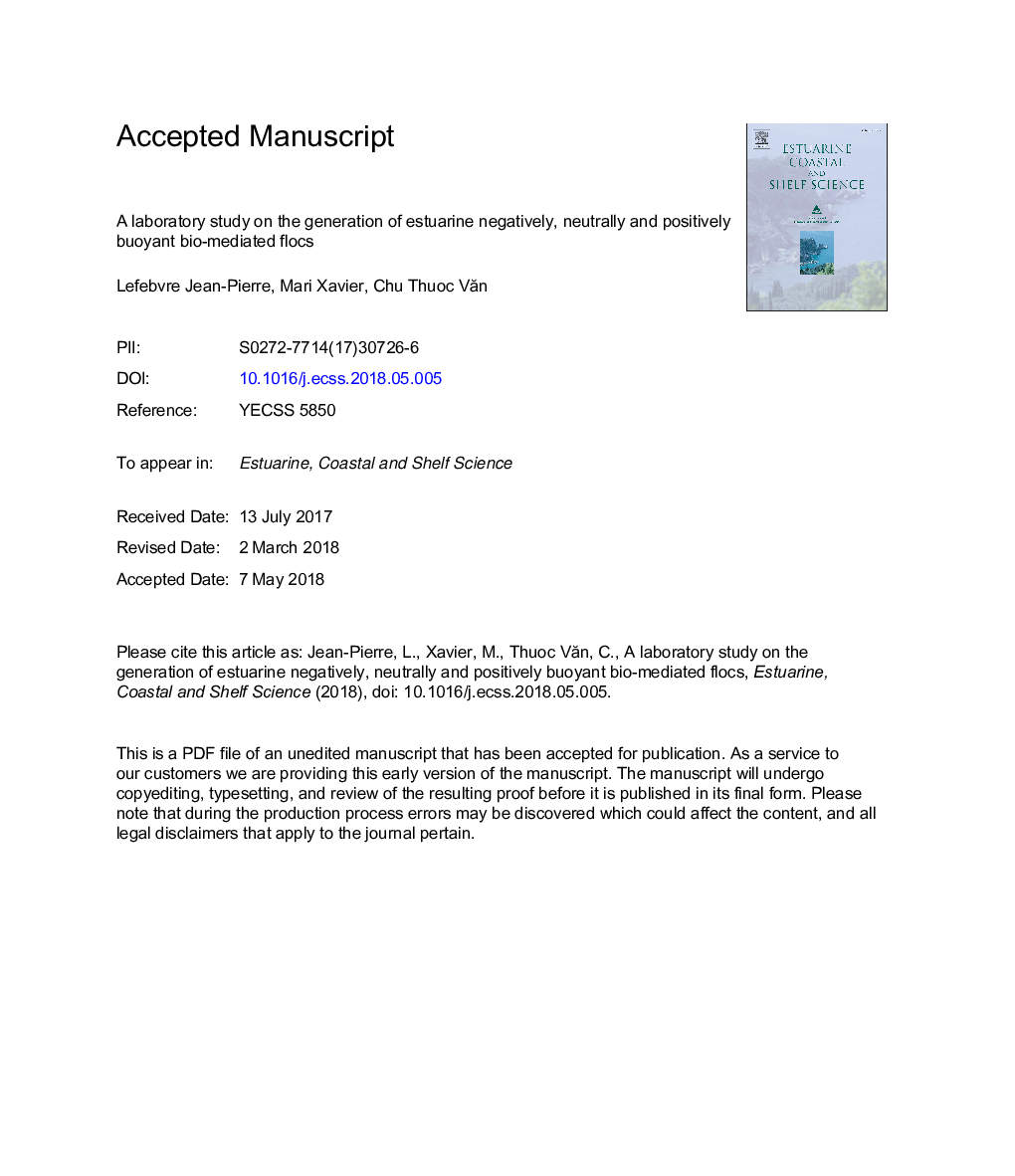| Article ID | Journal | Published Year | Pages | File Type |
|---|---|---|---|---|
| 8884770 | Estuarine, Coastal and Shelf Science | 2018 | 35 Pages |
Abstract
In estuaries and coastal areas, the mixing of inorganic and organic sediments results in the production of bio-mediated flocs. Their densities depend on the ratio between the light organic fraction and the mineral ballast. Transparent exopolymer particles (TEP) are ubiquitous in estuarine and marine environments. Because of their positive buoyancy, they form biofilms at the water surface. In order to investigate how the bio-mediated flocculation involving TEP impacts the sedimentation processes in the near surface layer of estuaries, we determined at the laboratory, the ascending/descending velocity of the mineral particles and their flocs size distributions (FSDs) of sediments sampled from the Cam River estuary (Vietnam), for concentrations ranging from 5 to 50â¯mgâ¯Lâ1, for two levels of turbulence representative to the slack water and mid ebb conditions of this estuary and for various TEP concentration and stickiness. The obtained results showed that the sediment velocity varied over two orders of magnitude depending of the conditions of the experiment. Ascending velocities were mostly measured for mid ebb conditions. The generated positively buoyant bio-mediated flocs were formed by microflocs coated by a TEP matrix. For the slack water conditions, FSDs were highly dependent of the TEP concentration and stickiness. Positively buoyant bio-mediated flocs were generated for specific concentrations and stickiness of TEP only. The corresponding FSDs were consistent with positively buoyant macroflocs, with TEP located mostly inside the flocs.
Related Topics
Physical Sciences and Engineering
Earth and Planetary Sciences
Geology
Authors
Jean-Pierre Lefebvre, Xavier Mari, Thuoc VÄn Chu,
